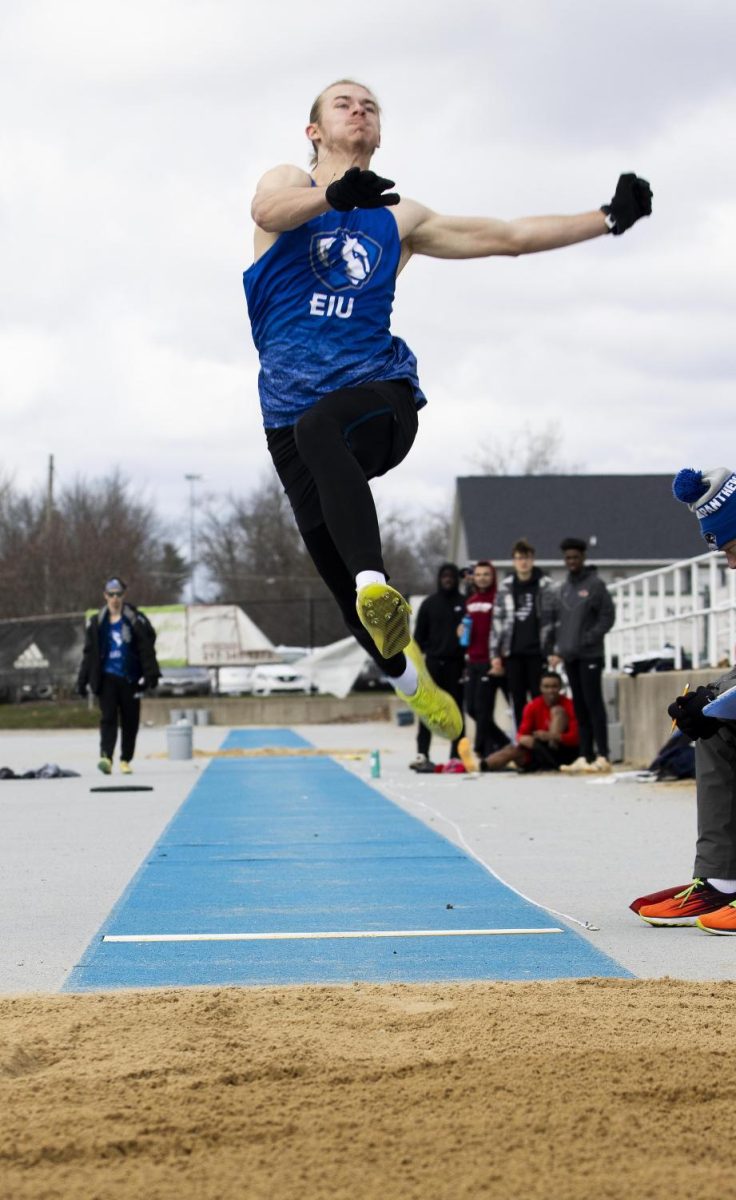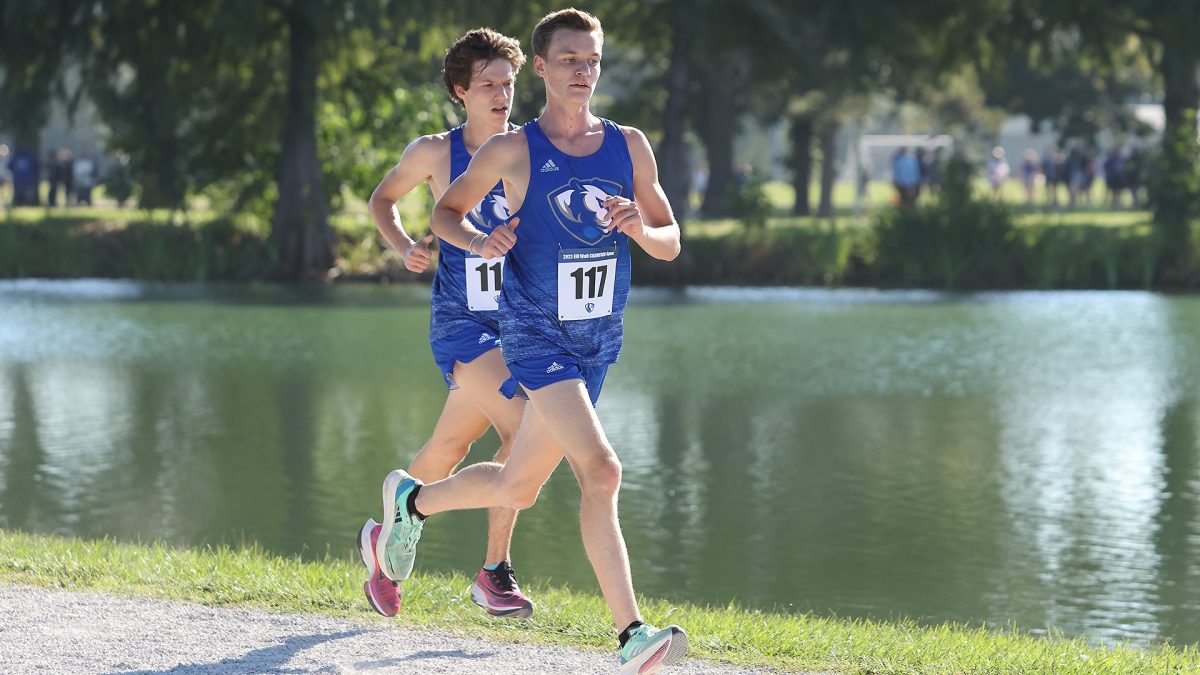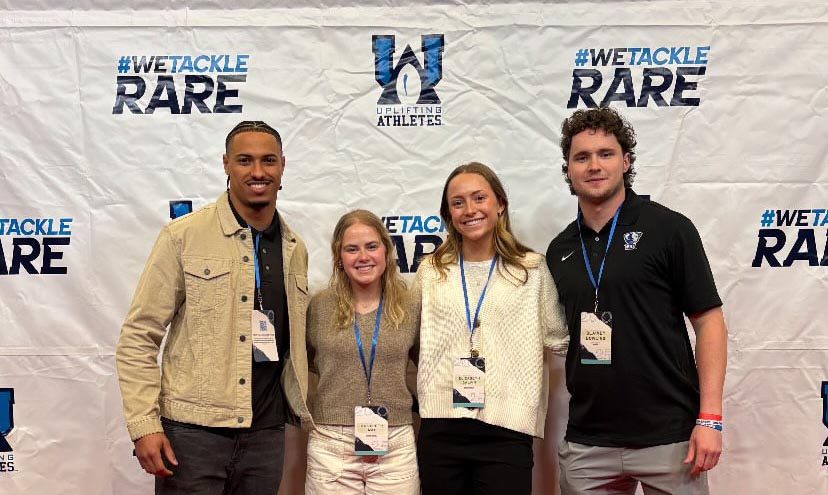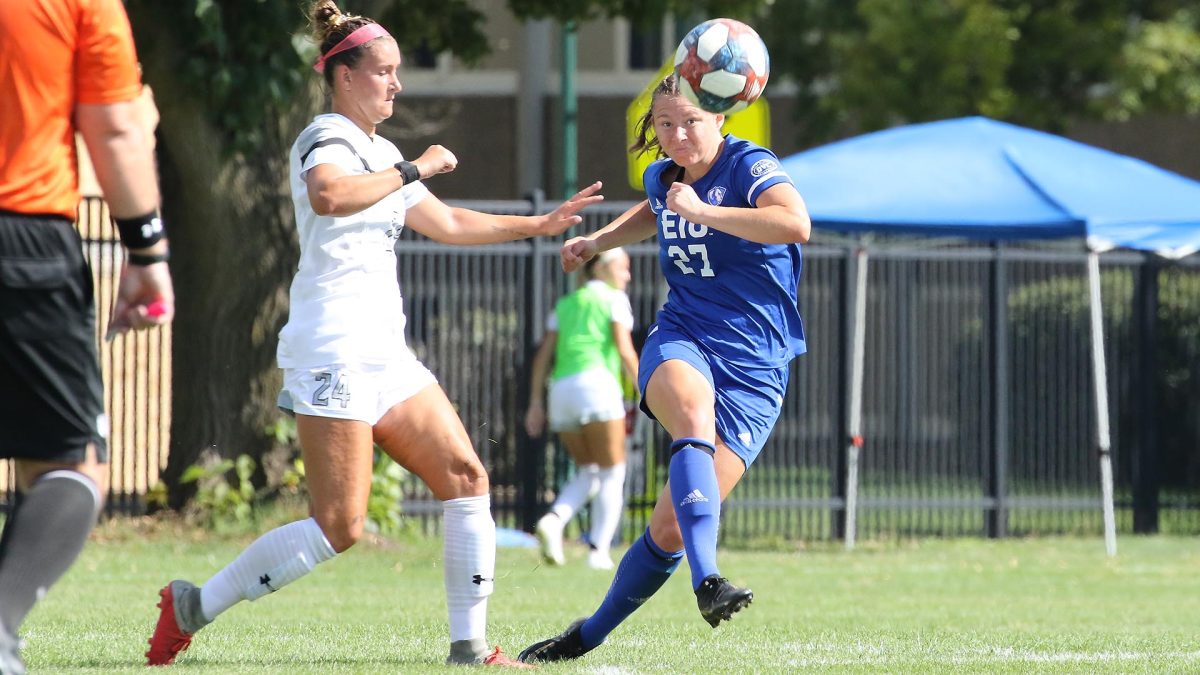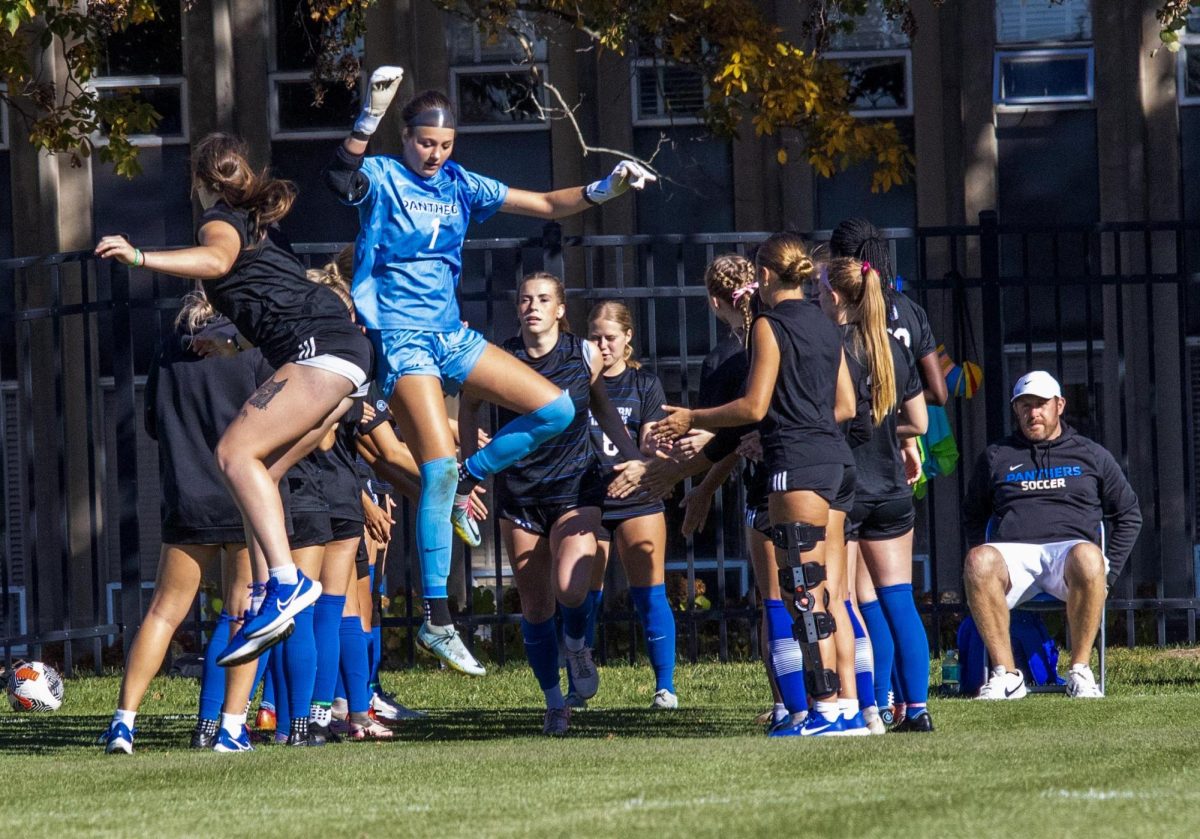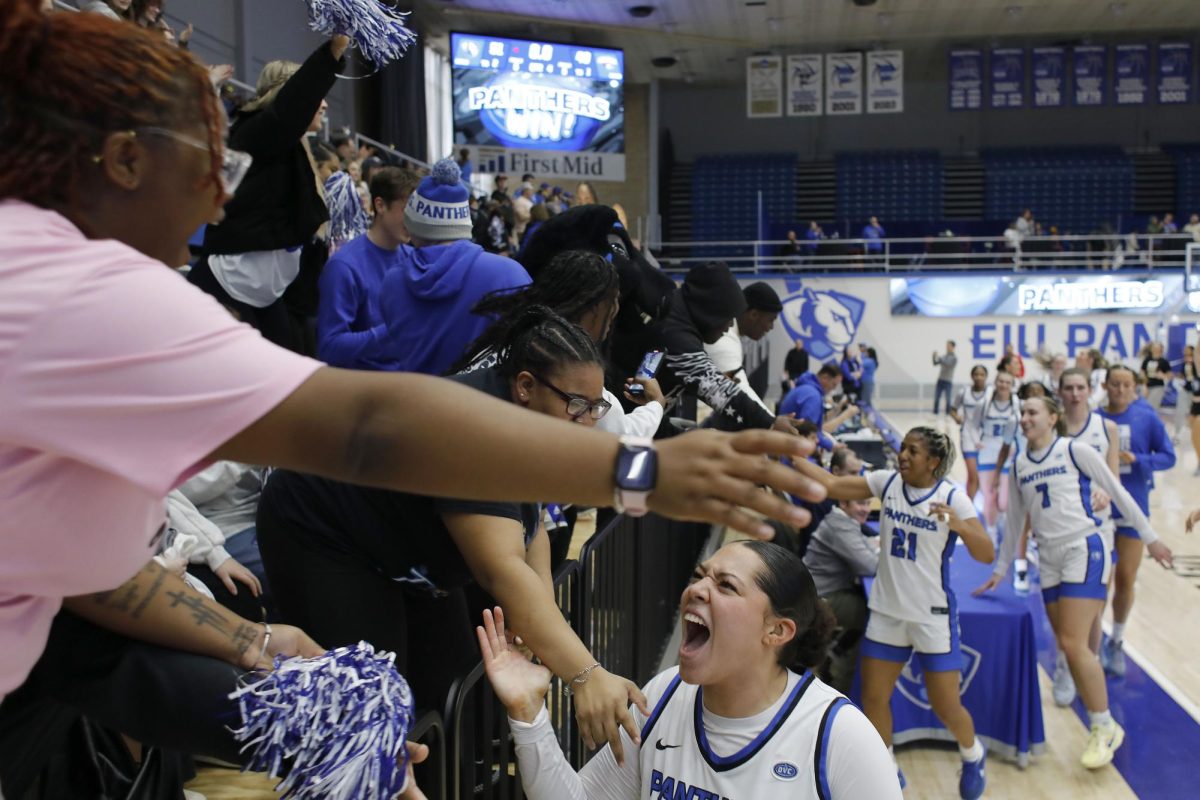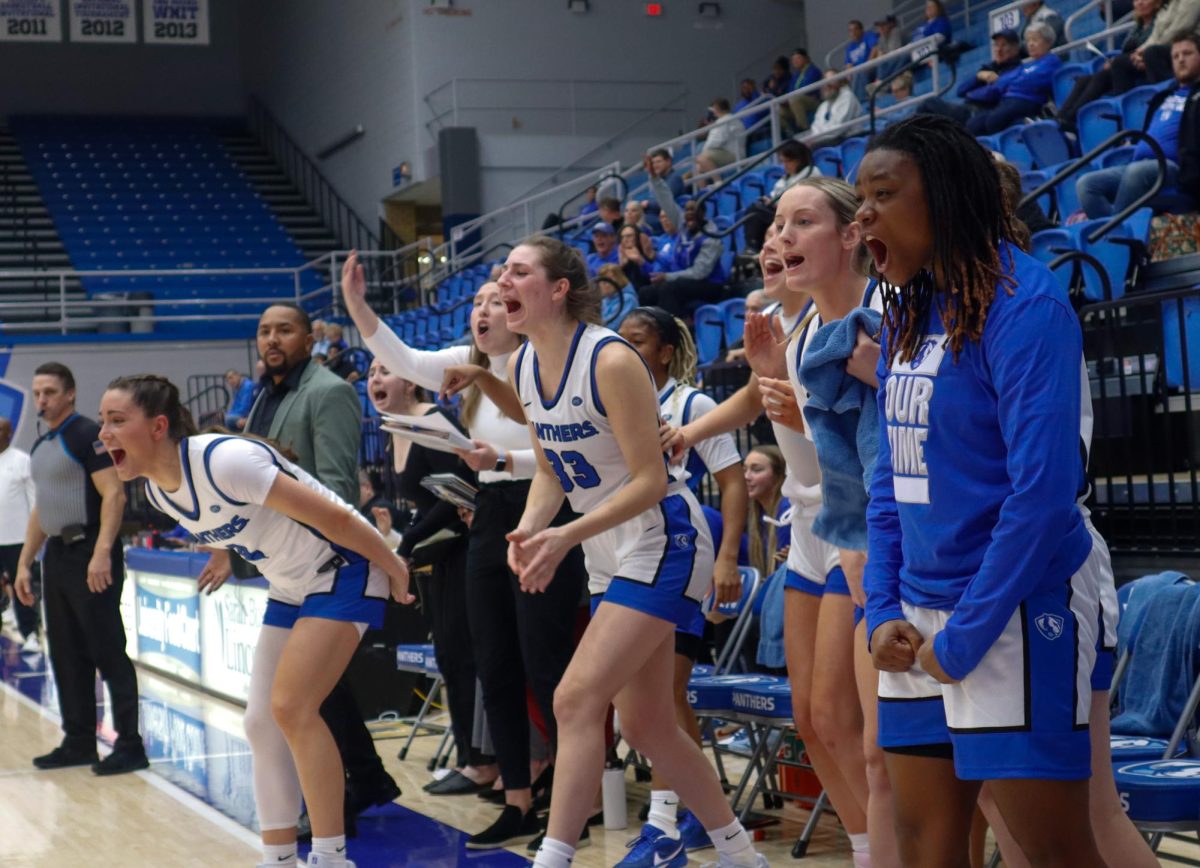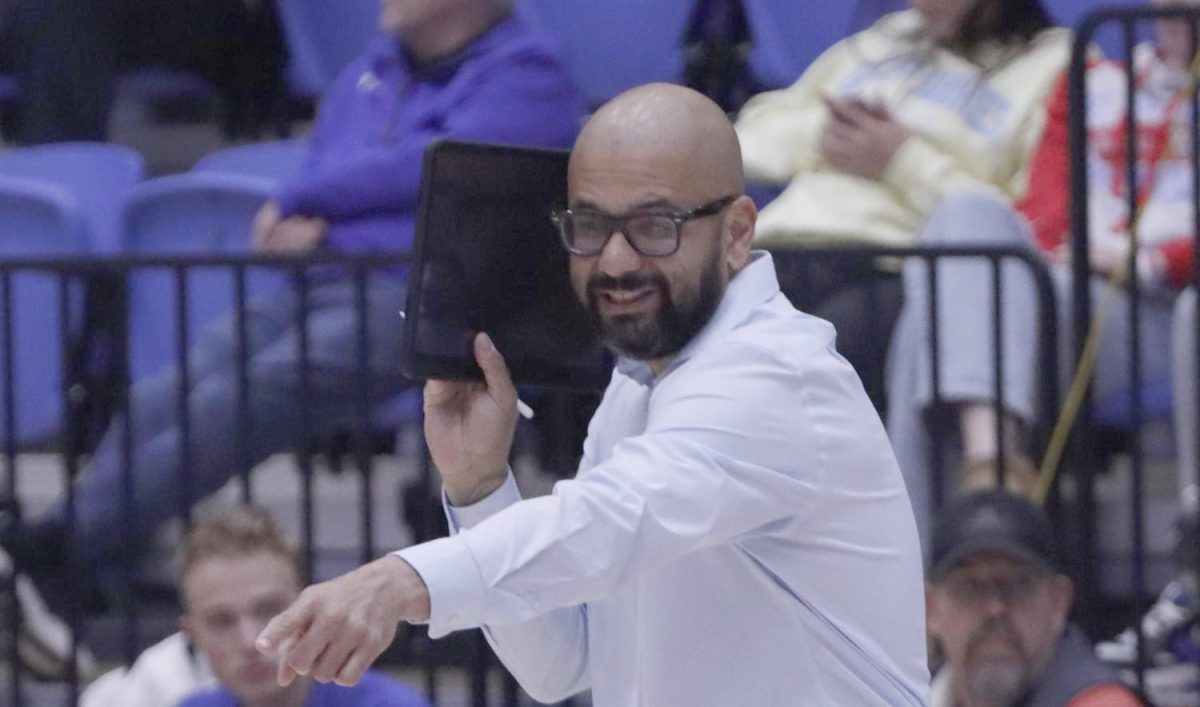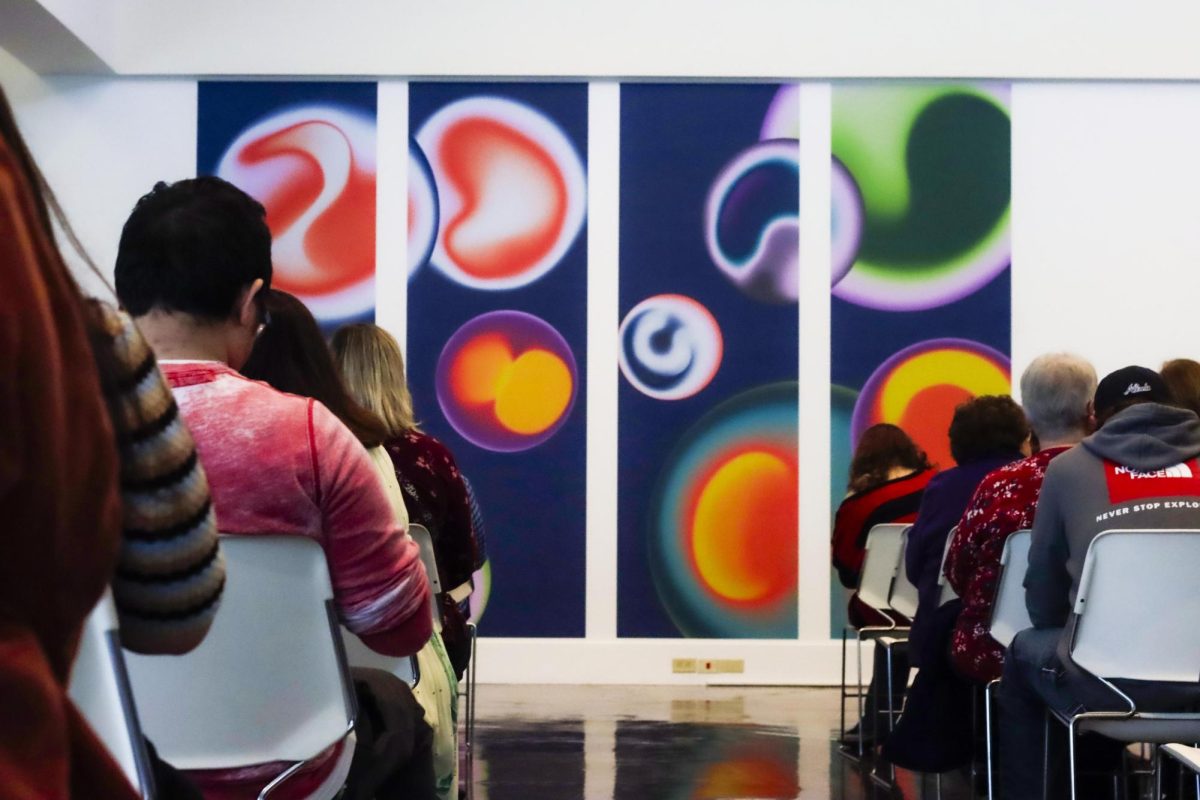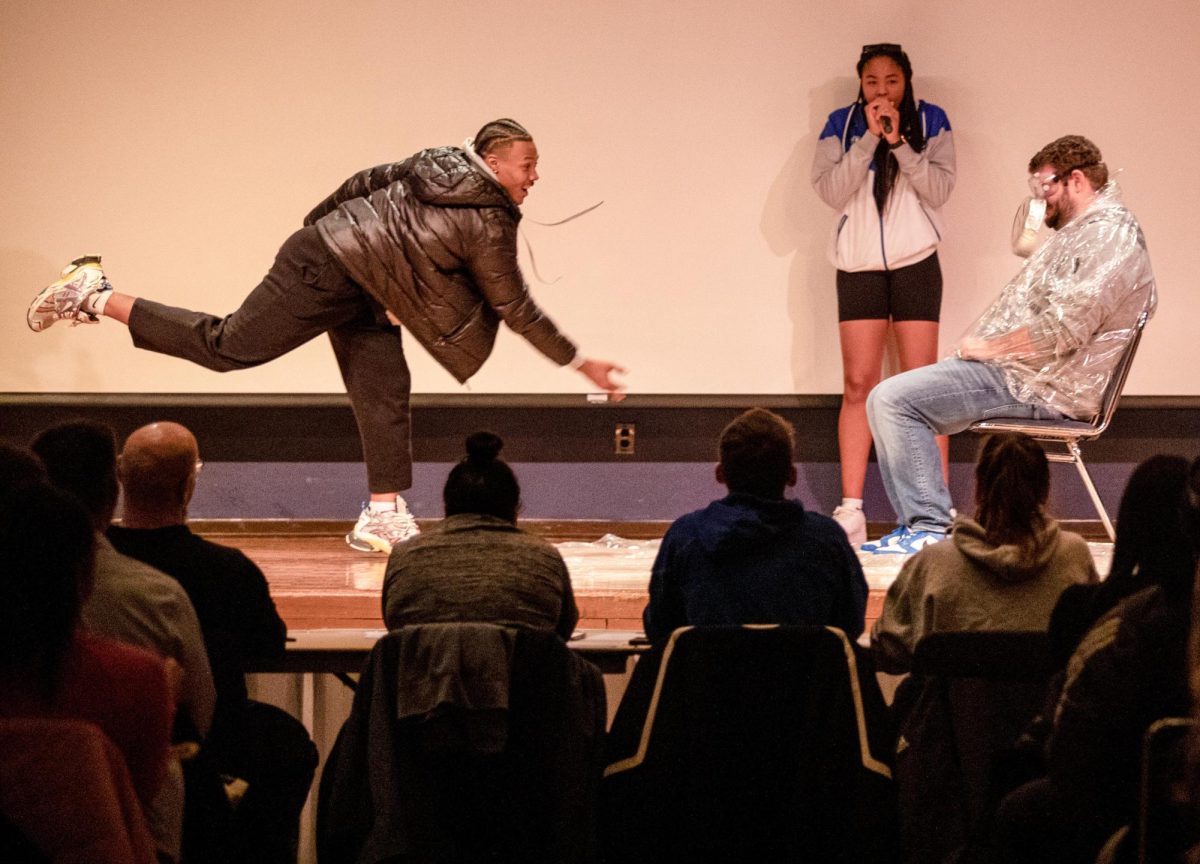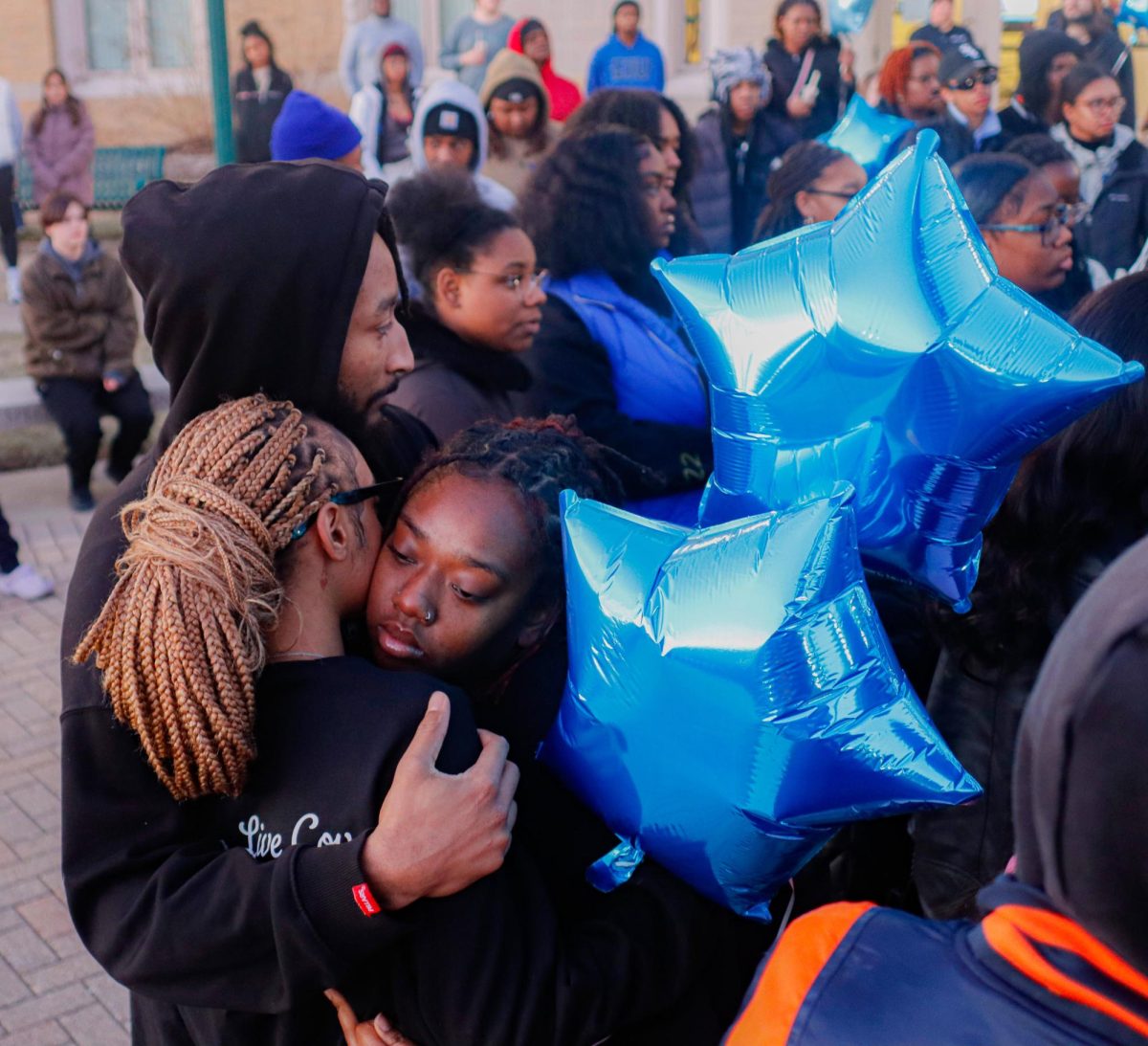Six witnesses testify in first day of trial
Asphyxia was the main cause of death, with contributing causes of manual strangulation, internal bleeding and stab wounds, in the murder of Shannon McNamara, a forensic pathologist said.
Dr. Travis Hindman, of Springfield’s Memorial Hospital, testified Monday as an expert witness in the murder trial of Anthony B. Mertz, 26, a former Eastern student.
Mertz was arrested June 12, 2001, and is standing trial for first degree murder, aggravated criminal sexual assault and home invasion. He could face the death penalty if convicted. Monday was the first day of testimony in a case that has been ongoing since June 12, 2001.
Indicating abrasions, cuts and bruises through photos taken during the autopsy, Hindman explained which wounds had caused the most trauma and gave his testimony as to when each wound was most likely inflicted.
The final cause of death, as determined by Hindman, was asphyxiation, defined as the inability to exchange air, caused by a wash rag that had been stuffed into McNamara’s mouth.
“It had to be removed forcefully,” Hindman said. “It was virtually stuffed in there.”
Photos presented to the jury also showed hemorrhaging in the mouth, as well as various stab wounds and bruising all over McNamara’s body.
Some of the wounds likely were made post-mortem, Hindman said. However, some injuries, including blunt force trauma that caused a laceration to McNamara’s liver, probably were inflicted before death, he testified. Internal bleeding was enough that it was likely the heart was still beating when the blow occurred.
Such a blow would take a lot of force, he said, as the liver is well protected by the rib cage.
Hindman testified some of the bruises around her neck might have been made in self defense.
“Some of them could be self-inflicted,” he said.
Questioning often centered around the charges of sexual assault and whether penetration occurred or if only cuts were around the genital and anal areas. Hindman testified during cross examination that there had been no anal or vaginal penetration.
DNA evidence, crime scene photos and personal testimony of occurrences the night before the murder were promised during opening statements by State’s Attorney Steve Ferguson.
He said he will connect Mertz to McNamara’s apartment through the discovery of a Navy credit card with Mertz’s name on it in the apartment, a possible DNA match between scrapings taken from under McNamara’s nails to Mertz, and a piece of latex glove found in her apartment that matched gloves found in Mertz’s apartment. Ferguson said only 1 in 1.8 billion white, unrelated individuals would match the DNA type that was found, and Mertz was a match.
Ferguson also mentioned a kitchen knife found in a dumpster near Mertz’s apartment that had blood on it that matched McNamara’s and the brand of knife that McNamara had in her apartment. He also mentioned Mertz had access to box cutters, like the one found in McNamara’s apartment, at his job as a building service worker at the Student Recreation Center.
Mertz’s attorney Paula Phillips delayed her opening statements until the defense begins its portion of the evidence stage.
The prosecution introduced testimony, beginning with McNamara’s roommate, Carissa Brooks, followed by a police officer; a neighbor; the victim’s father, Robert McNamara, and the county coroner.
Brooks testified she had been at work at Stix on the evening of June 11, 2001, and returned home at about 1 a.m. June 12, 2001. She saw McNamara’s door was closed, which usually meant she was sleeping.
Brooks said she changed clothes, called her boyfriend and went to his house for the rest of the night. She said she made sure to lock the deadbolt on the apartment when she left.
Brooks testified she returned home a little before 9 a.m. the next day and noticed the deadbolt was not locked. She said when she opened the door, she saw McNamara lying on the floor in front of her, with a cut down her abdomen. Brooks said she immediately went upstairs to a friend’s apartment and called the police.
She described her state at that time as “hysterical.”
During cross examination, Brooks was asked by defense attorney Paula Phillips if she was sure she had deadbolted the door and if she ever had thought she had locked it before, but really had not.
Brooks said she was sure she had because she had been “spooked” by a truck that had driven through the neighborhood very slowly with its dome light on.
Officer Ron Delude with the Charleston Police Department testified next, and as the first officer on the scene of the crime, was the first authority to witness the body.
“I noticed a large, gaping wound on her abdomen,” he said. “It was obvious that she was deceased.”
Three paramedics arrived about the same time as Delude, and he said no one touched the body to the best of his knowledge. He testified that about five minutes after he arrived a detective arrived on the scene. The two of them did a quick search of the apartment to make sure no other victims or a potential suspect were on the premises.
McNamara’s father testified third, mostly to verify facts about McNamara while she was living. No cross examination of his testimony occurred.
Michael Letinin, who was McNamara’s next door neighbor at the time, testified that he had been awoken early in the morning, between 5 and 5:30 a.m. by strange noises coming from McNamara’s bedroom, as the two rooms shared a wall. He said he did not think anything was wrong, that the noises sounded sexual in nature. He said he heard no voices, just thumping and muffled moans.
He said he might have been awoken by a scream but was unable to say if that was definitely what had awoken him.
Coles County Coroner Mike Nichols testified as well, saying he had declared McNamara dead at the scene after observing a “massive wound” that began near the neck and extended through the sternum, to the belly button.
During cross examination Nichols said he did not try to ascertain a cause of death at the scene. He said McNamara had been dead for several hours when he arrived at the scene around 11:30 a.m. June 12, 2001, but declared time of death when he pronounced her dead. He testified it is not the job of the coroner to determine exact time of death. Hindman also did not set an exact time of death.
The trial will continue today at 9 a.m. in Courtroom 1 of the Coles County Courthouse.
















![[Thumbnail Edition] Senior Foward Macy McGlone, getsw the ball and gets the point during the first half of the game aginst Western Illinois University,, Eastern Illinois University Lost to Western Illinois University Thursday March 6 20205, 78-75 EIU lost making it the end of their season](https://www.dailyeasternnews.com/wp-content/uploads/2025/03/WBB_OVC_03_O-1-e1743361637111-1200x614.jpg)






